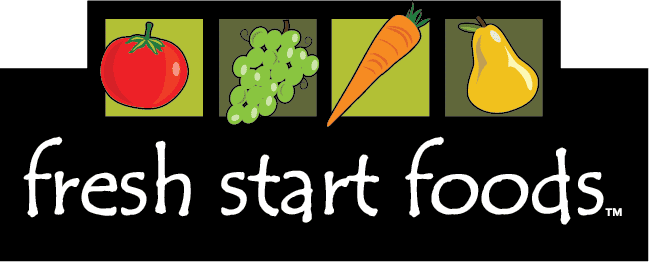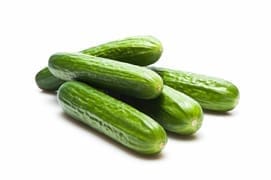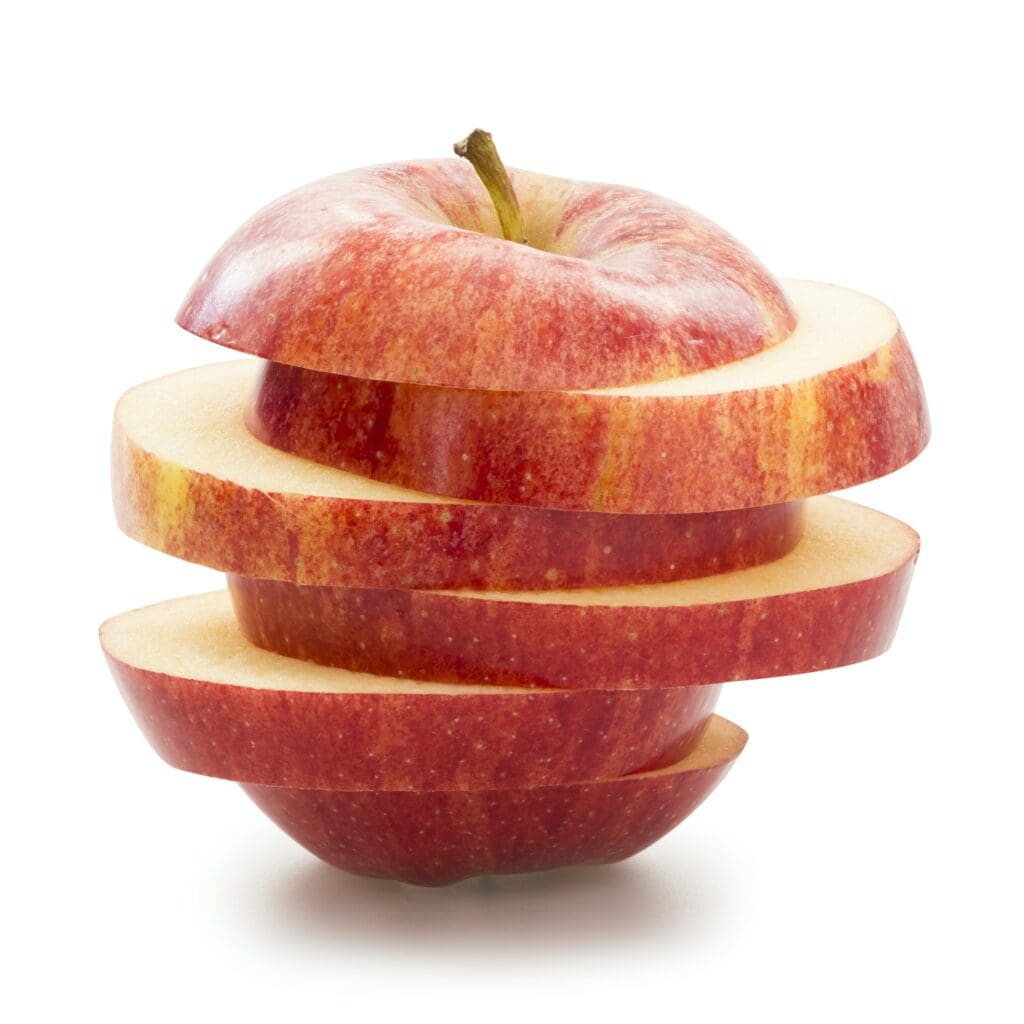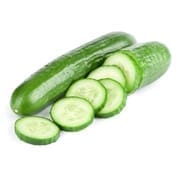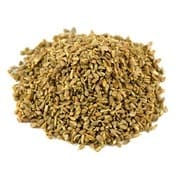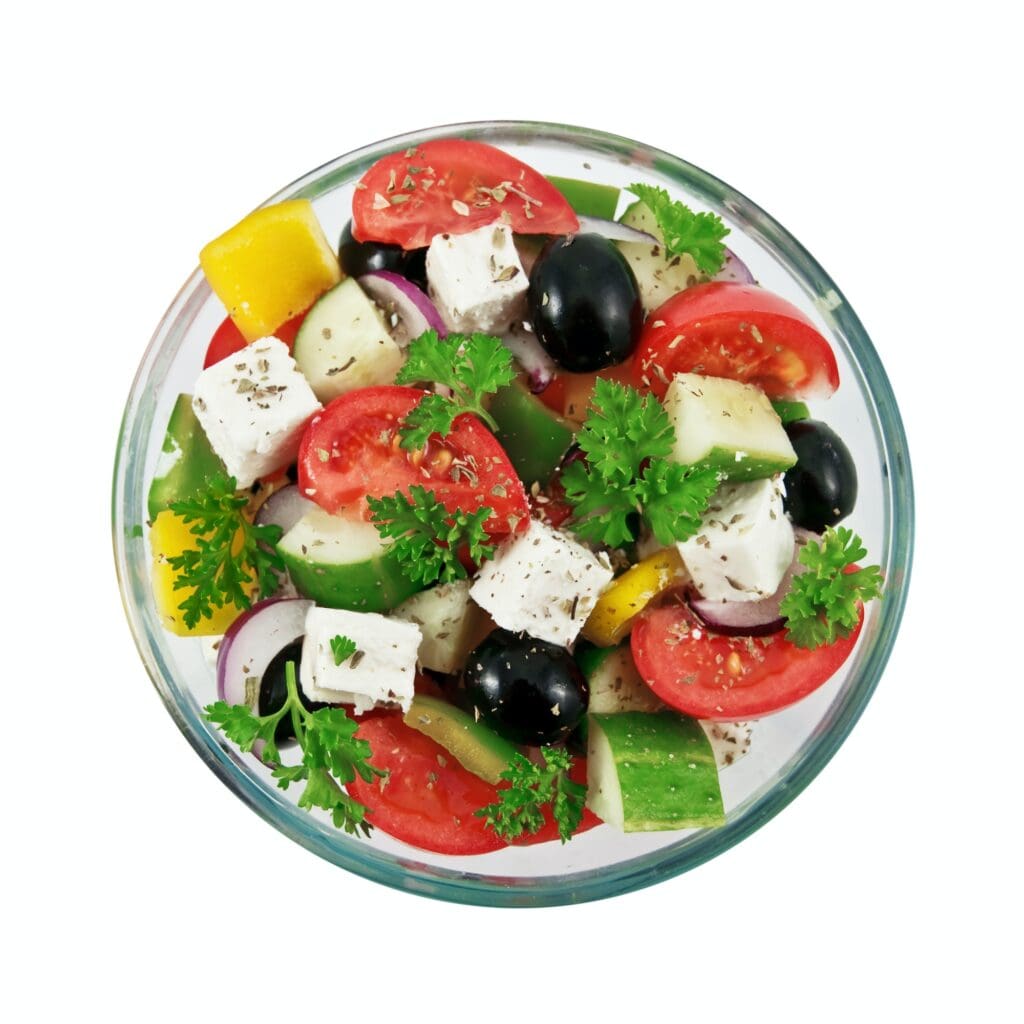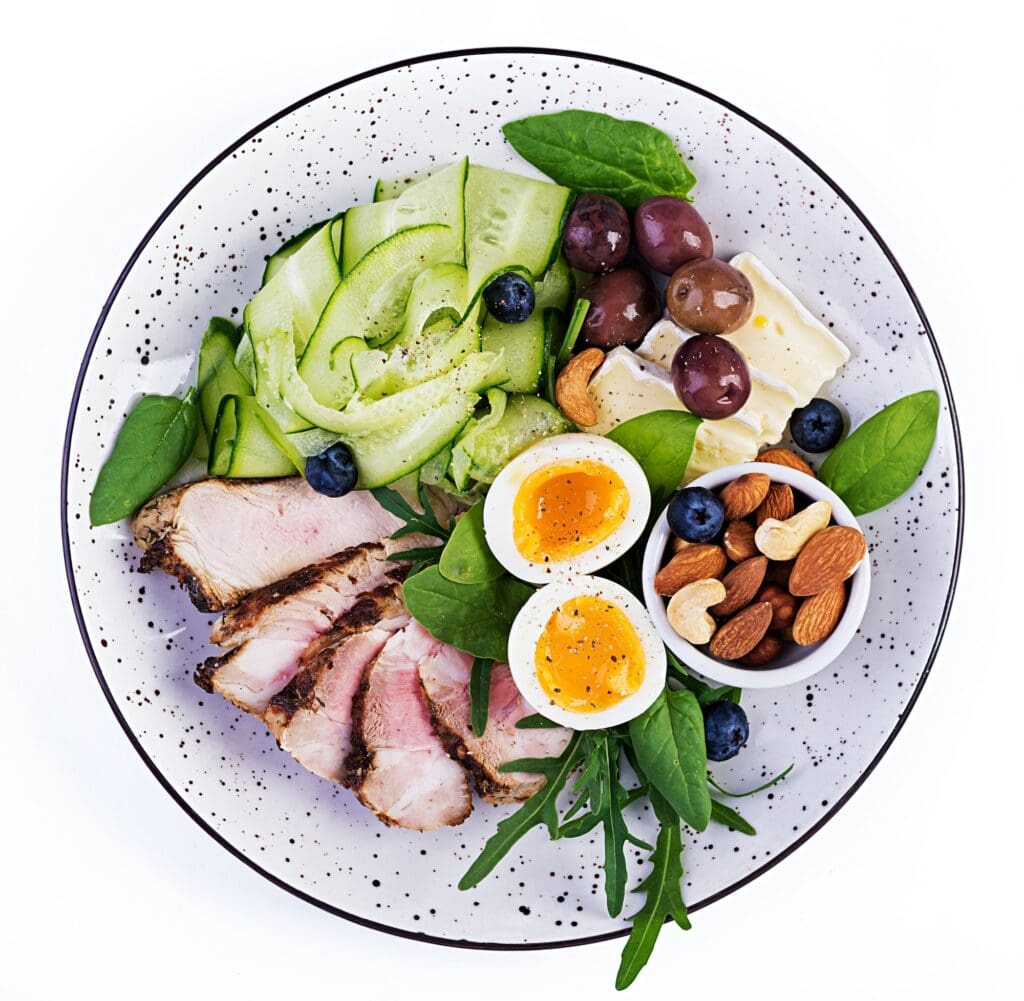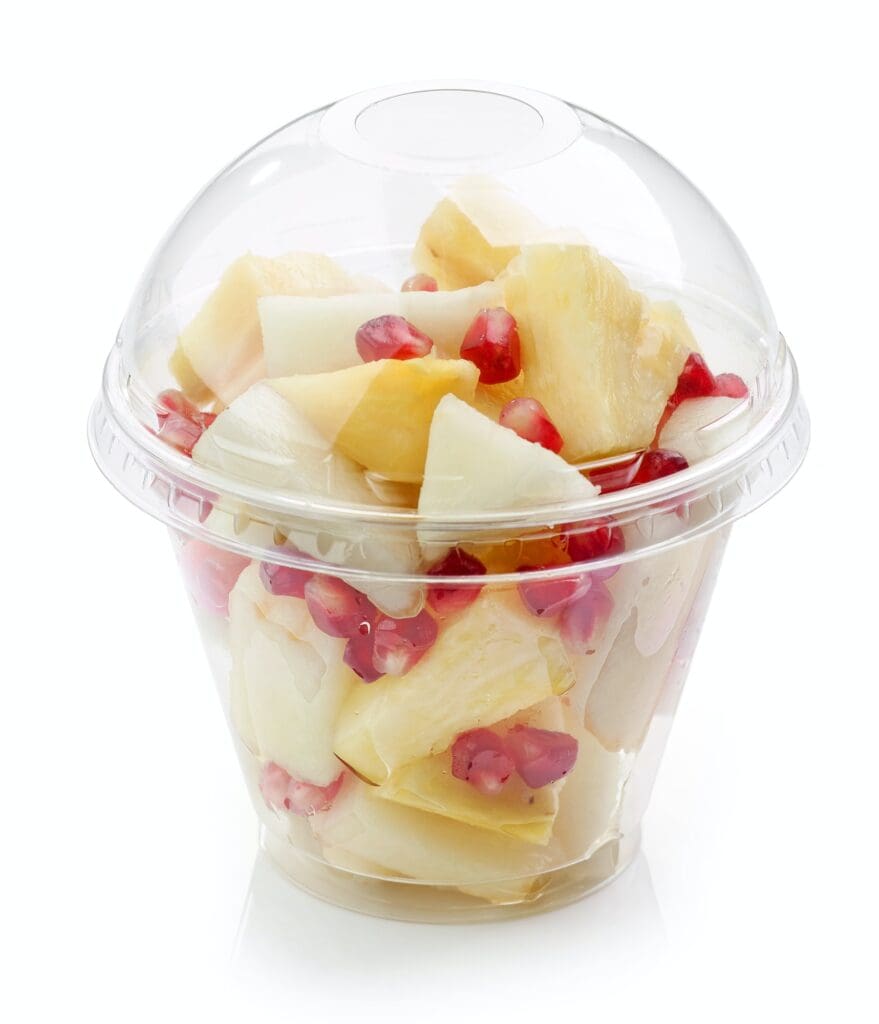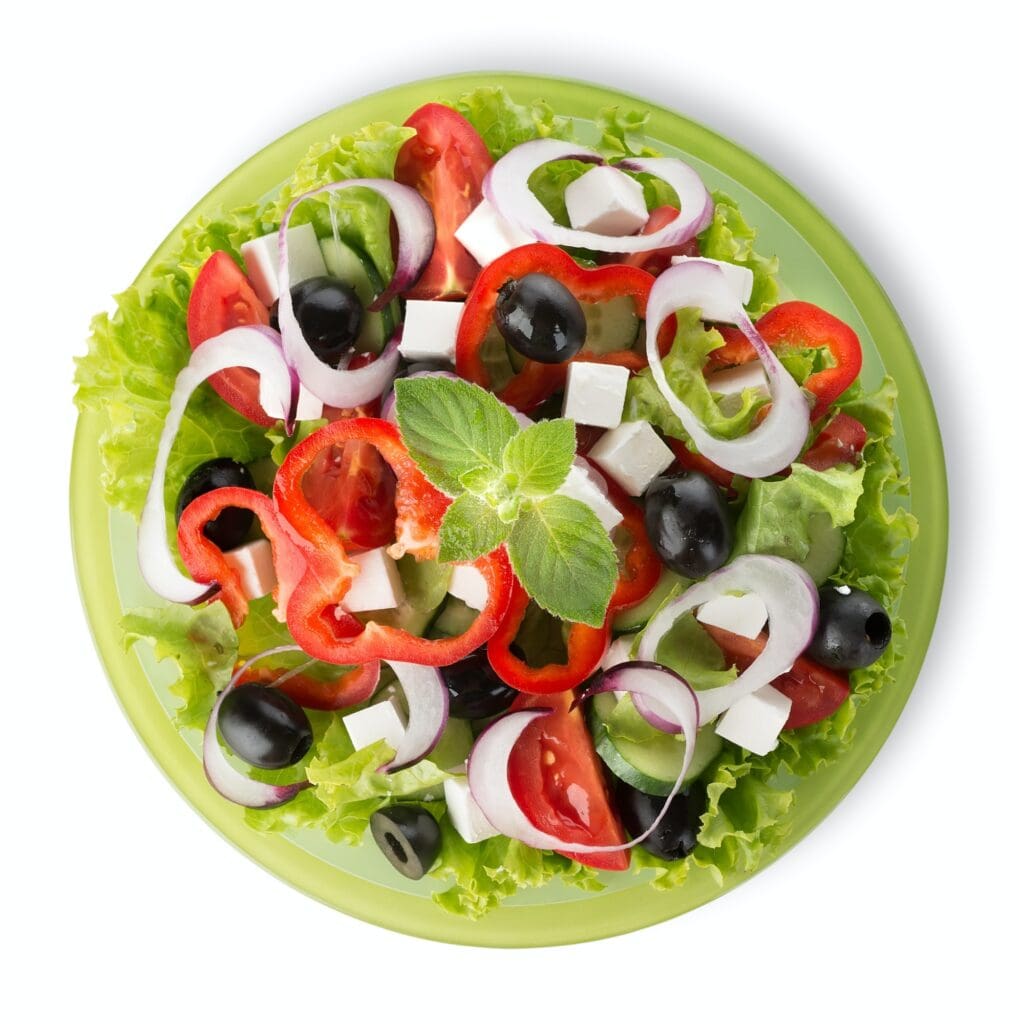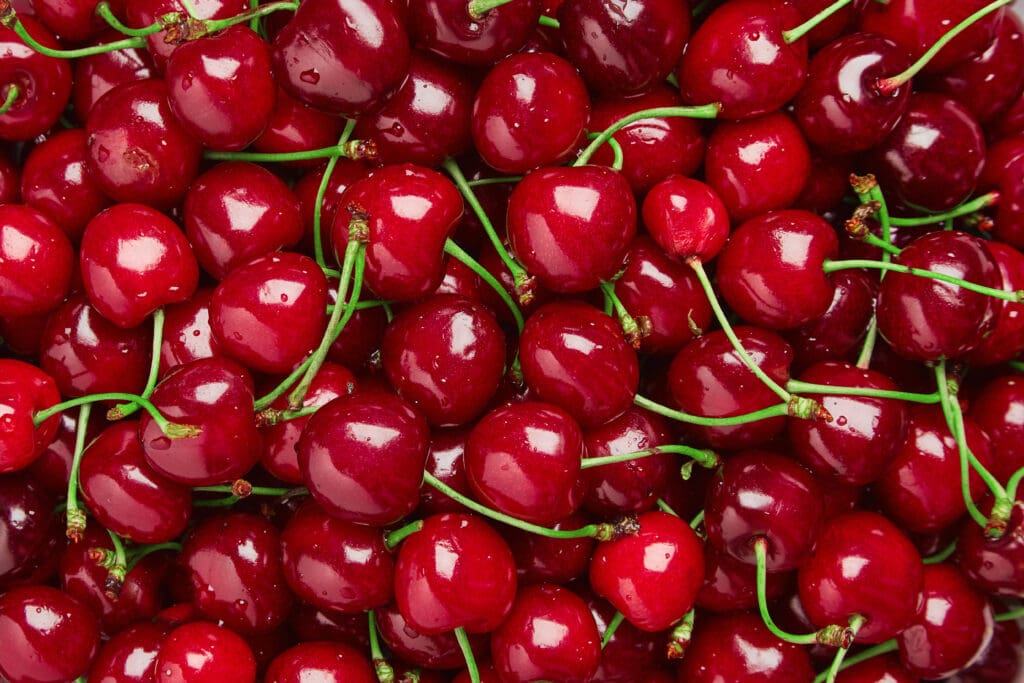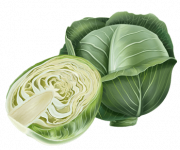ONTARIO LOCAL
** NEARLY DONE ** FIELD GROWN RHUBARB- Supplies are winding down. This week will be the last.
** NEARLY DONE ** ASPARAGUS- Ontario asparagus continues to be available. Ideal weather has allowed for the season to unexpectedly continue. Expect the supplies to be wind down by weeks end. ** SOON ** CORN: We can expect to see the first arrivals of local corn this week. Sizing may be on the smaller side in the first few lots, but it is expected to be fully up to size by next week. ** SOON ** FIELD TOMATO: The crop is progressing well with ideal growing conditions. Supplies should start in about 2 weeks.
** SOON ** PEELED BABY CARROTS: Recent heavy rains and extreme heat have pushed the start date to the week of August 3rd.
** SOON ** BUNCHED CARROTS & BEETS: First bunched carrot & beet harvest will be July 8th. First ship date will be July 13th.
** NEW ** CHERRIES: Cherries have started from Niagara! Packed in 18x1lb clamshells. Please note, it is a short season, usually lasting only 10-14 days. Weather has been co-operative. Act fast to avoid disappointment.
** NEW ** CAULIFLOWER: Growers have started harvesting. We should better supply into next week. Quality is very good.
** NEW ** FAVA BEANS: Available in full bushel boxes. Prices to start are higher but will ease as supplies increase.
CELERY: Ontario celery has started from Chips Gardens in Bradford. Overall quality is very good, however, is priced much higher than US product.
CRATE BASIL: A definite favorite is back! Ontario crate basil is available in good supply.
PICKLING CUCUMBERS: Pickling cucumbers are now available. Packed in ½ bushel cartons. Size 3’s (small) and 4’s and 5’s(large).
PICKLING (LONG) DILL: Sold in large bunches. Goes perfect with Ontario pickling cucumbers to make a truly local pickle. Supplies are good. HERBS: The full line is in harvest; Curly and plain parsley, dillweed, cilantro and methi. May see some small gaps due to recent rains and extreme heat.
BROCCOLI: Growers continue ramping up volume for the season. Fields are looking excellent with no issues from the previous days of heat and rain. Pricing is steady, but should ease as production increases. Packing both crowns and bunched.
GREEN KOHLRABI: Green kohlrabi continues, packed in 12ct boxes. Quality is very good. BEANS: Both green and yellow beans are in light supply, packed in half bushel cases and now full bushels. Prices are very high with very strong demand. Quality is very good.
ENGLISH PEAS: Ontario English pea supplies are good, packed in half and full bushel cases. Prices have eased as supplies increase. Quality is very good, with ideal growing conditions.
GREEN ONIONS: Supplies are improving with ideal growing conditions. Pricing is steady. Quality is very good.
FIELD STRAWBERRIES: Field strawberries continue with good volume. Demand is strong due to retail demand. Growers are past peak production with the June crop. After a gap of about two weeks, we will transition to the “everbearing” or “day neutral” varieties which will continue until first frost.
GREEN ZUCCHINI: Ontario green and yellow zucchini continue with good supplies. Quality is outstanding. Supplies will build through the week with pricing easing. We also have Ontario zucchini flowers packed in a 2L basket.
CHINESE VEGETABLES: Baby Shanghai bok choy and regular bok choy continue with good supply. Quality is good with steady demand.
LEAF/ROMAINE- Ontario supplies continue to increase with favorable growing conditions. All lettuces seem to have come through the heat unscathed with no bumps in production. Overall quality remains good.
GREENS- Ontario collards, dandelion, red kale, black kale, green and red swiss chard packed in 12ct cases are all available with stronger supplies. Bunched spinach and green kale, packed in 24ct cases are also available in good supply with excellent quality.
BUNCH RADISH- Bunch radish supplies remain strong with exceptional quality and strong availability.
WAX TURNIP (RUTABEGA) – Ontario rutabaga continues with good supplies out of storage.
CARROT- Ontario new crop cello “bagged” carrots have started. We need another 10-14 days for new crop jumbo carrots to start. The remaining storage heirloom multi colored carrots will not have a good shelf life as they are from last season. Buy only as needed. We should start to see some fresh supplies in about 1-2 weeks.
MUSHROOMS- Supplies of all varieties are very good with no concerns of any issues in the foreseeable future.
CABBAGE– Ontario new crop green cabbage has started. Quality is very good. New crop red cabbage will start mid-late July.
APPLES– MacIntosh, Empire, Gold Delicious, Red Delicious, Cortland, Ambrosia, Fuji, Ida Red and Royal Gala continue to be available out of storage. Quality on all is very good.
HOTHOUSE LETTUCE- Supplies of Sensei Farms baby lettuce are very good with very good quality and exceptional shelf life. Hydroponic boston/butter supplies are good.
ENGLISH CUCUMBERS– Supplies remain very good with moderate demand. The gap in supply we expected, has not transpired as growers that were growing strawberries have planted cucumbers when they pulled the berry crop early. Quality is very good with stable, low pricing expected to continue.
HOTHOUSE STRAWBERRIES- Very light supplies of Ontario hothouse strawberries continue, with most growers having to pull crops due to disease causing low yields. Quality is very good; however, berry size is on the smaller side.
HOTHOUSE TOMATO- Beefsteak tomatoes will be limited this summer, due to lighter supplies grown in Ontario. Tariffs on imports from Canadian owned US greenhouses have stopped the normal flow of product when Ontario runs short. Ontario, red vine, heirloom and grape tomatoes continue to be available in good supply with steady pricing.
VEGETABLES
WEST COAST LETTUCES California green leaf, iceberg, and romaine prices remain elevated due to continued strong demand in Salinas and Santa Maria, California.
ICEBERG- Demand exceeds supplies. Supplies in Guanajuato, Mexico, have been slow to recover after a hailstorm and ongoing rains. Processors have been buying up acreage in the Salinas valley as well as Santa Maria due to lack of quality supplies in Mexico. This is the direct reason for shortages in the industry. Expect light supplies all this week. California fields have returned to normal growth patterns and are no longer maturing ahead of schedule, as they had over the past three months. Overall quality is good; fluctuating densities and insect pressure are present in some lots. Elevated markets are expected to continue for at least the next two weeks. Value-added items are on second trigger levels and this will continue for the week. Expect lighter carton weights to be 34-38 pounds on average. Misshapen heads are also reported from multiple suppliers. East Coast supplies are average for this time of year; iceberg weights are lighter than normal with large frames and puffy texture.
ROMAINE / LEAF- Supplies of romaine as well as green and red leaf are tighter in availability compared to last week. Romaine hearts are limited as well. All previous mentioned items are active, industry wide. Value-added romaine products are on first trigger levels and this will continue for this week. Fringe and tip burn has been reported upon arrivals as well as lighter weights and sizing on all leaf items.
SPRING MIX/BABY SPINACH/BABY ARUGULA- Spinach and arugula supplies have tightened due to yellowing caused by erratic weather. Expect limited supplies to continue into next week. Spring mix supplies are good, with good texture and quality.
CANADIAN LETTUCES Supplies of iceberg, leaf lettuce, romaine and romaine hearts out of Quebec are steady, with strong demand. Prices have increased as demand has shifted from California.
QUEBEC ICEBERG- Iceberg quality continues to be good with strong demand and higher pricing. Heads continue to be are well shaped with good frame. We still might start to see some long core / seeder due to the recent heat wave. Current weights are being reported at 40-44lbs on 24ct wrapped.
ROMAINE / LEAF- Quebec: Romaine and romaine heart quality is good with weights in the 38-40lb range on 24ct packs. Pricing is higher with increased demand. We are seeing some light twisting. We might start to see some tip burn and long core or seeder as a result of the recent heat wave. Ontario: Ontario romaine production continues. Green leaf supplies are better than last week and growers have now moved to 24ct cartons. Quality is very good; however, the recent extreme heat will most likely cause tip burn and long core / seeder.
GARLIC- Prices continue inching up for both whole cloves and peeled garlic. China: Supplies of peeled garlic from China continue to become lighter supply as the old crop winds down. New crop harvest has begun in a light way, and will increase as we move into July. Quality could be an issue on the last of the old crop and it will not hold as long. Buy only as needed. We won’t likely see new crop arrivals until late July. Imports: The 2024 California storage crop and the 2025 Argentina supply are fully depleted. New crop, Mexican whole garlic continues to be available with excellent quality. U.S. tariffs on Chinese garlic have shifted demand to Mexico, which has Mexican growers pushing prices higher. The bulk of the raw product being utilized for peeled garlic in California is now being sourced from Mexico. California’s new crop harvest has begun in a limited manner and will be in full swing by early July.
BROCCOLI- Ontario: Ideal growing conditions allowed an earlier start to this season. Broccoli crowns and bunched are now available in good supply. Quality is excellent with minimal defects being reported. Continued ideal weather conditions will allow for strong production. Pricing is higher due with very strong demand. The season will run until early November weather permitting. Quebec: Supplies of bunched 14’s, 18’s and crowns continue to increase with strong demand. Quality is excellent with minimal defects being reported. Similar to Ontario, growing conditions are ideal. Pricing has increased due to very strong demand. The season will run until late October, weather permitting. California: Prices are on the rise; supplies are limited. Pest pressure from Diamondback moths is impacting yields. Cooler nighttime temperatures have slowed growth, promoted mildew, and led to occasional purple cast on crowns. West Coast acreage will decline through July as growers adjust their plantings in response to regional and local harvests beginning across the country. Expect markets to remain elevated through at least mid-July. Additional volatility is expected, and demand may surge if other regions encounter supply gaps. Mexico: Prices have remained comparable to West Coast markets. Quality ranges from fair to good; heavy presence of hollow core is being caused by high heat following rains. Central Mexico is experiencing scattered thunderstorms that bring the risk of hail damage; heavier rain may also restrict field access for harvesters, decreasing availability. East Coast: Various regions will experience short growing seasons through the summer. The Georgia and Florida seasons are over. The delayed onset of limited production in North Carolina and Virginia has led to a supply gap, forcing most demand to rely on the West Coast. Early season rains followed by high heat have led to stunted growth in most lots. The Maine and Michigan seasons are due to start in the next two weeks and run through October. New Jersey, Pennsylvania, and New York will also begin harvesting in late July/early August and last through September.
CAULIFLOWER– Limited industry supplies and strong demand are keeping markets elevated. Production in Salinas and Santa Maria, California is light; demand is stronger than anticipated for this time of year. Cool and overcast weather in Salinas and Santa Maria have led to slow growth. Overall quality is good with minimal defects; insect pressure is present. Moderately warm temperatures next week should help push fields forward. Adverse weather in the East and Mexico have limited regional supplies, pushing demand out West. Volume will ramp up in Ontario, Quebec, Maine, New York, and New Jersey mid-July. Expect relief within the next 7-10 days as demand softens and supplies continue to ramp up across multiple regions.
CABBAGE- Canadian: The Ontario storage cabbage season is done. New crop green cabbage has started with light supplies. We can expect red cabbage to start mid-July. Imports: Georgia has ended for the season. Cabbage is in good supply and there is good quality out of North Carolina. Illinois is getting started this week, with Michigan expected to start this week.
BEANS- There is good supply available with new crop beans available out of Georgia and Baja. We are seeing some rain in the region and could impact supply over the next week. Coachella, California should ramp up over the next week. Overall quality is good. Snipped: Value-added snipped/trimmed green bean supplies have returned to normal with very good quality. This is expected to be the case into next week.
FRENCH GREEN BEAN / BABY SQUASH- Production out of Guatemala has slowed due to a lack of rainfall and continued shipping delays. Volume is expected to remain steady through next week. Overall quality is reported as good, and pricing remains generally unchanged.
CELERY- No change with celery this week. USA/California: Supplies are steady with good volume available in the Salinas growing region. Overall quality is nice. The weather forecast calls for average temperatures with no rain expected in the growing regions. Markets should remain steady in Salinas. The Michigan season will start in early July and continue into October. Canadian: One Ontario grower, Chips Gardens has started with 24ct celery. We should see Quebec start with celery this week.
BRUSSELS SPROUTS- Markets remain elevated as supplies finish up in Mexico and California supplies are slow to start. Mexico: Several suppliers are wrapping up their fields in Baja, Mexico this week. Humid weather and tropical storms are worsening as we enter the hottest months of the year. Quality is poor; characteristics such as elongated heads, heavy seeder, and insect/worm damage are present. California: Brussels Sprouts are now shipping out of Salinas, California. Salinas supplies are slowly increasing; Oxnard supplies are helping in a limited manner. Quality is average; both regions are presenting some inconsistent sizing and seeder. Supplies are expected to improve over the next two weeks as more fields start in the Salinas Valley
CARTON BAKING POTATOES- Old Crop Storage: Supplies of russets, reds and yellows out of multiple regions, including Ontario, Manitoba, PEI, Quebec, Idaho, Washington, and North Dakota remain very good. While the market has remained relatively flat for most of the calendar year, we’re now beginning to see supply tighten and prices inch upward. As we start move through July, supply is expected to be tighter than we’ve seen in some time, with current supply constraints primarily affecting larger-size cartons (40ct through 70ct). However, as we approach the end of the storage season, availability across all sizes and grades is expected to become more limited. Growers will transition into new crop Norkotahs, ushering in typical “harvest market” conditions. Pricing is anticipated to begin slightly higher than where storage crop Burbanks will finish but should gradually decline as harvest volumes ramp up. New Crop: Ideal spring weather, with warm days and cool nights, is creating optimal growing conditions in the Pacific Northwest. Acreage in Idaho is expected to be similar to last year, and assuming no major disruptions, we can anticipate a market similar in tone and behavior to the previous season. Acreage is reportedly down roughly 5% from last year, but with prime growing conditions, yields are expected to be exceptional, barring any unforeseen weather events. Water is plentiful due to last winter’s snowpack. Norkotah harvesting and packing normally begins in early to mid-August.
FIELD PEPPERS- Limited red pepper supply from Canada and Mexico has shifted demand to California, pushing prices up during the Coachellato-Bakersfield transition. Green peppers on the East Coast are transitioning north due to a recent heatwave and hailstorm that affected Georgia production; Georgia’s season is winding down, with most growers finishing soon. Rains and winds from tropical storm Chantal moving through the Caolinas and Virginia will affect overall pepper supplies. New supply is expected from the Northeast and Midwest. Red Pepper: California’s Imperial Valley production is slowing down as previous hot weather has accelerated the harvesting schedule. Growers in Bakersfield are expected to start full production this week. Volume is low out of Central Mexico. Expect higher markets over the next two weeks or until Bakersfield production is well established. Green Pepper: Demand has shifted to California. The Georgia season is winding down; a recent hailstorm has ended the season sooner than planned. North Carolina production was expected to continue for another three weeks, however the effects from Tropical Storm Chantal over the weekend will bring heavy rains and high winds possibly ending the season early. The Northeast and Midwest regions are expected to start harvesting within the next week. Volume is steady in California’s Bakersfield area with excellent quality being reported and all sizes being available. Yields are sufficient in Central Mexico; quality is good. Expect higher prices over the next two weeks.
ASSORTED CHILI PEPPERS- Supplies in general are good with most varieties out of Mainland Mexico as well as Baja. Supply will slowly improve just as quality with additional volume. Jalapeño and Tomatillo will be lighter this week. Shishito will be the shortest and could see some supply interruptions. Fresno hot pepper is slowing ramping up, seeing some Poblano and Jalapeno this week.
HOTHOUSE PEPPERS- Supplies of Canadian greenhouse orange and yellow pepper are very tight this week. Recent heat has affected overall supplies as the plants have slowed production. Prices are much higher. Quality is good to fair, again, due to the heat.
GREEN ONIONS- Green onion supplies are getting a little tight and prices are reacting upwards. Overall quality remains very good. This market is expected to remain steady at slightly higher pricing. Ontario and Quebec green onions continue to be available this week at slightly higher pricing.
EGGPLANT- As harvests wrap up in the Southeast, sourcing has shifted westward. California crops are currently providing steady supplies with consistently high quality.
ZUCCHINI- Ontario: Green and yellow zucchini supplies are good with good quality. Hot summer days with very warm nights has promoted growth. Demand is light and with increasing supplies pricing continues to inch down. Quebec has also started production, supplementing overall supplies. Imports: Markets are higher. Supplies out west are experiencing a low production window out of Baja, Santa Maria, and the Fresno area. There is good supply out of the northwest. There is light volume out of South Georgia as the season closes. Transition to the Carolinas and Tennessee will take place over the next week; markets are higher. Expect more growers to com online in the coming weeks.
ONIONS-The Washington storage onion season is ending; Northern California and New Mexico fresh run onions are in full swing. Washington: Washington red onion storage supplies have finished; growers are transferring to Californian onions to fill orders. Washington yellow onion storage supplies are diminishing and are expected to finish in the next two to three weeks. Availability is strong on all sizes. Quality is good; occasional translucency is being reported on remaining storage supplies. Markets are rising. California: Northern California’s fresh-run season is in full swing. Both red and yellow onion supply is strong. All sizes are available; size profile is peaking on jumbos for both red and yellow onions. Quality is good; excess skin and higher moisture content is typical of fresh-run onions. Fresh-run onions will have a shorter shelf-life compared to storage onions; we would recommend ordering for quicker turns. Markets are slightly higher. New Mexico: Supplies of all sizes are adequate. Quality is good; excess skin and higher moisture content is typical of fresh-run onions. Fresh run onions will have a shorter shelf-life compared to storage onions; we would recommend ordering for quick turns. Rain this week has reduced harvesting in Southern New Mexico. Expect markets to rise over the next 7-10 days. Ontario / Quebec: Grower shippers in Ontario and Quebec continue shipping storage onions from last season. There is about another two-three weeks of supply until transition to US grown product to bridge the gap. Quality on remaining supplies are good, however ordering for quick turns is recommended due to sprouting. Markets are inching higher as supplies dwindle. New crop Ontario onions are projected to start in September. Vidalia Onions: Vidalia onion growers continue shipping this year’s sweet onion crop. It was unexpected that the crop would endure a tropical storm, a hurricane, floods and even 6 inches of snow. Despite these unpredictable conditions, the crop has managed to withstand the challenges with only minor damage. Vidalia onions thrive in a unique growing region spanning 20 counties in South Georgia. Their sought-after flavor results from a delicate balance of specific weather patterns and soil conditions found exclusively in this area, creating an optimal environment for their growth. The season will run until early September.
NEW CROP TABLE POTATOES- Ontario: We should start to see some Ontario new whites in about a week. USA: Florida has just about finished shipping for the season. North Carolina and Virginia have started, and both have solid quality and volumes on reds and yellows thus far. There is some concern about what the upcoming heatwave might do to the crop, especially if there is rain too.
ENGLISH CUCUMBERS– Supplies are slowing due to the heat in the greenhouses. The plants are slowing down to protect themselves from the heat. Quality is still very good. Pricing is up significantly. The sizing curve is now heavy to smalls. Large and extra-large are very tight. Mini Cucumbers: As with regular English cucumbers, production has slowed significantly. Quality remains very good.
CORN- Ontario: We can expect to see the first arrivals of local corn late this week. Sizing may be on the smaller side in the first few lots, but it is expected to be fully up to size by next week. Imports: There is excellent supply out of South Georgia. In the west, Tracy, California and Brentwood, California are now in full production. We are seeing a split market with significantly higher prices in the west. Quality is good in all locations.
COLLARDS/CHARD/KALE- Supplies are very good from Ontario. Green and red kale and green and red swiss chard are in excellent supply, packed in 12ct cases. Quality is very good.
FRUIT
WATERMELON- Watermelon supplies continue to be very strong with strong summer demand. Seedless watermelons are available in Florida, Georgia and in Central California. Mexican watermelons are all but done. 60-count seedless are a little tight due to heavy retail programs. Georgia has started and there are plenty of 36-count seedless and 45-count seedless. July is a time to promote melons.
PEARS- Washington pears will finish in three weeks. Imported pears from Argentina are winding down. California pear harvests will begin in mid-July. Washington: Washington D’Anjou pear supplies are decreasing as the season wraps up by July 18. All sizes are available; remaining supplies are dominated by 110- and 135-count sizes. Bartlett and Bosc pears are finished for the season. Prices remain elevated as supplies decrease. California: Bartlett pear harvests will begin in the Sacramento River growing region in a limited manner the week of July 14. California is estimated to see a 30% increase of Bartlett volume this year compared to 2024. California suppliers ship 40-pound packs; Washington suppliers ship 44-pound cartons. Growers expect a good range of sizing and excellent quality. Due to higher sugar content, Bartletts typically have a shorter shelf life compared to D’Anjou. Expect elevated markets as the season begins, then for markets to level out as the season ramps up. Imports: The Argentinian pear season is winding down. There are steady supplies of Bartlett, Bosc, Packham, D’Anjou, Abate and Forelle. Pricing is higher than a typical season due to limited supplies from Washington
MANGO- Approximately 4.5 million boxes are expected to arrive from Mexico this week. The main varieties in the market are Ataulfo (Honey), Kent, and Tommy Atkins. Industry pricing has reached a seasonal low across all sizes, supporting strong and steady demand. While most sizes remain readily available, 12-count fruit is seeing a tighter market due to increased promotions and a shifting size curve.
BLUEBERRIES–The Pacific Northwest has started their season early; Eastern Washington, Hermiston, Oregon, and British Columbia all have reported excellent quality and size. The Mexican season has ended and volume is decreasing in California’s San Joaquin Valley; the season will run through July, depending on weather conditions. Supplies are now shipping from Eastern Washington and Hermiston, Oregon and British Columbia as well as New Jersey. Quality and sizing are good. Expect markets to inch up. Canadian: Ontario blueberries should start over the next 10 days. British Columbia production has started; volume will continue to increase into next week.
RASPBERRIES / BLACKBERRIES– Raspberries: Ontario: The crop has started with light supplies, but volume should start to ramp up this week. Packed in ½ pint containers, pricing is double that of imports and this product is a special order as they have a very short shelf life. Imports: West Coast production started last week. California’s Santa Maria season is underway; quality is excellent. Growers will harvest in California’s Watsonville/Salinas region starting July 20. Baja and Central Mexico are still going. Demand is soft and some volume deals are being offered. Medium-sized berries dominate availability. Quality problems in Central Mexico include softness, mold, and leaky berries as the season starts to wind down. Most growers have moved to Baja. Blackberries: Similar to raspberries, harvesting in the San Joaquin Valley of California has begun in a light way with numbers expected to Increase steadily moving into late-July. Supplies are sufficient and demand is steady. Georgia is producing now as well. The Pacific Northwest / Oregon / British Columbia season has started in a light way as well. Central Mexico is still crossing numbers but the quality ranges from poor to fair. Heat-related issues include softness and cell regression (black cells shrink and turn red); fungal development has been reported.
GRAPEFRUIT-25% Canadian retaliatory tariffs continue to be in place for Citrus from the United States. California: The Central Valley Star Ruby season continues with good availability and strong quality. Internal color and sugars are excellent. Supplies are expected to remain steady through most of July. Imports: Chile and South Africa are arrivals in light volumes are expected to start by mid-month.
STRAWBERRIES- Production is steady against strong demand in the Salinas and Watsonville areas. Production will start to decline following the seasonal peak. Additionally, cooler temperatures have slowed fruit maturity. Overall volumes are expected to dip through July and August, with a significant rebound anticipated as fall production ramps up in Santa Maria and Oxnard. Quality remains strong, featuring full color, medium to large sizing, and excellent flavor. Ontario Hothouse: Hothouse production continues to be very light. Disease has caused the industry to pause and consider better growing options to avoid future disease. Retail is taking most of the production as field grown fruit dominates the marketplace. Quality is good and sizing is on the smaller side. Expect to see stocks tighten and markets increase. Supplies will improve in October with new crops, grown using new techniques. Ontario Field: The June crop is winding down quickly. Supplies will be VERY tight as growers transition from the “June Crop” to the “everbearing / day-neutral” crop. The fruit set is good; they just need to ripen. Once the “everbearing” start, we will have field strawberries until first frost.
GOLD PINEAPPLES– Costa Rica / Honduras: 10% US tariffs are now in place for pineapples from Costa Rica and Honduras that transit through the USA. Supply is stable with less surplus this week versus last week on all sizes. Availability of fruit in the market is now lighter with 6s and 7s pulling a higher price this week for fresh arrival. Demand is light and there is some older fruit being sold for lower pricing. Conditions are expected to change with fruit getting tighter as we are coming out of the natural flowering cycle. Market increases are expected along with lighter supply in the coming weeks. The quality of fruit being exported to North America is very good. The market is inching higher as pineapple demand increases with the lower supply.
CITRUS- California Oranges: 25% Canadian retaliatory tariffs continue to be in place for Citrus from the United States. Valencia’s are the main variety as navels are done. Valencia’s are currently peaking on 113ct/138ct as this season gets underway. The fruit will size up as the season progresses. At this point, we are seeing around 48hrs of gas times to help color up the Valencia’s. Brix are in the 12-13 range and fruit is eating very well. Offshore Navels: Navel supplies out of Chile are anticipated to be down this season. South African navel supply should be comparable to last year. Overall, imports may be active this summer with uncertainties in the global trade markets. The first Chilean and South African navels have started to arrive in limited volumes. Early fruit is trending medium to large in size, with solid quality and sugar levels in the 11–13 brix range. Supplies are expected to build into next week. Cara Cara Oranges: Cara Cara oranges are finished for the season. Offshore Cara Cara should be available late July. Blood Oranges: Similar to Cara’s blood oranges are done for the season. Imported Cara Cara should be available late July. Mandarin/Clementine: The California season has finished. Remaining inventory is minimal and clearing quickly. Early Peruvian varieties are in the pipeline with Chilean clementines starting to land. Quality has been strong, with good sugars and firm skin. South African mandarins are arriving in light volume with more volume toward into August.
STONE FRUIT- California yellow and white peaches and nectarines continue to be in good supply, with larger and improved varieties arriving weekly. Both black and red plum volumes are increasing as the season progresses. Washington cherries are in abundant supply offering strong volume and very attractive pricing. Size profile is peaking in the 10–10.5 row range. Peaches continue to be available in the east out of Georgia and South Carolina.
CANTALOUPE- The Cantaloupe market is strong due to retail ads. The warm weather is producing high quality cantaloupes; we are seeing good shell and internal color in the fields; brix levels mostly in the 14-16% range consistently. Sizing is leaning heavy on jumbo 9’s and regular 9’s will some 12’s mixed in; this should even out over the coming days. Suppliers continue to transition from the desert to Central California.
HONEYDEW- The honeydew market is strong due to retail ads for the holiday. Supply is currently transitioning from the desert to Central California. Honeydew production has started off strong and is coming in heavy on 5’s this week. Quality is good; mostly clean shell, we are seeing occasional scarring on the first picks. Brix levels are mostly in the 14-16% range.
LEMONS– California: 25% Canadian retaliatory tariffs continue to be in place for Citrus from the United States. With the hotter weather, demand for fresh lemons is increasing. Steady supplies are coming from both District 1 and 2. While fruit from District 1 is starting to soften as harvest wraps up (approximately two more weeks remaining), quality remains strong. As we shift into District 2, expect more fruit in the 140s to 200s size range. Currently 140/165/200ct lemons are looking extremely tight. Medium to large choice lemons are more readily available as of now. Supplies are tightening quickly. Offshore: Argentinian fruit continues to arrive, however, availability is also limited. Argentina’s shipments to North America are down 77% year-over-year, with some growers reporting freeze damage; crop updates are expected next week. Despite the reduced volume, early quality reports from Argentina remain strong. Europe is paying top dollar for lemons out of Chile since the Turkish and Spanish crops are down, and Chile is favoring this market since it also avoids the US tariffs. Size distribution out of Chile is expected to peak at 115s, 140s, and 165s, with approximately 75% to 85% of the crop anticipated to be fancy grade. Overall volume is projected to increase by about 5% compared to last year, reaching an estimated 21–22 million boxes. Chile’s vessels have also been delayed due to weather, further straining the import market. Mexico’s crop is projected to begin mid-July, peaking small and reporting down roughly 60% year over year.
LIMES-The lime market is steady with improved availability on 175’s while 110’s and 150’s remain snug due to rain in the growing regions of Mexico. There are good supplies on smaller-sized fruit (200’s, 230’s and 250’s). More rain may briefly limit crossings, but overall July supply looks strong. Quality is improving; some quality issues like oil spots and rot are showing up in transit, caused by heat and humidity during harvest.
GRAPES- The Mexican grape season will wrap up over the next two weeks. California harvests will start July 13 which will bring additional downward pressure to the market. California: Green and red seedless supplies are forecast to begin shipping on July 13. Expect higher prices at the start of the season, but markets will ease once California volume ramps up in late July. Good quality is anticipated. Mexico: Mexican grape shippers have mostly recovered from the storm damage and are dropping prices to spur movement. The Mexican season will end the week of July 7. Elevated demand and good quality are anticipated as the season concludes.
ONTARIO HOTHOUSE TOMATO- Red Tomato On-The-Vine & Beefsteak: Summer production continues with fairly good supplies. Overall supplies are expected to tighten as production slows in Ontario, due to the recent heat. Growers are unable to utilize volume from US greenhouses, as they had planned, due to tariffs on fruit crossing into Canada. The size profile on beefsteak is more balanced as the season progresses. Bite Size (Cherry, Grape, Cocktail, Medley): Flavor and quality continues to be strong from Canada. Production levels are expected to remain stable, with overall quality and flavor expected to continue to be good. With imported grape tomato supplies not meeting demand, we can expect pricing to increase.
BANANAS- 10% US tariffs are now in place for all Bananas from Central America that transit through the USA. Banana supply is expected to be volatile over the next several weeks due to Chiquita firing 6,500 employees and shuttering operations in Panama in June. This is impacting the global supply chain. We do not expect major shortages at this time; however, prices remain high. We are keeping a very close eye on this situation as there are talks with the Panamanian government for Chiquita to resume operations in Panama. It has been reported that the plantations have “deteriorated significantly” and the fruit has been damaged. Overall, banana quality has been good and improving as we enter the summer grow cycle. Overall inventories are light, and we are seeing higher turns at the port and ripening centers; some of the fruit may not reach optimum color prior to arrival. We are advising customers to keep a close eye on ripeness; there may be some need to keep a heavier than normal inventory on hand and self-manage color to protect from shorts.
AVOCADO- Supply remains elevated, with strong demand and availability across all sizes. Market prices are easing on larger fruit and strengthening on small and medium fruit. Mexico is nearing the end of its season and continues to present high dry matter and a large proportion of grade #2. Mexico’s transition to the new Flor Loca Crop is expected to begin by mid-July, during which both crops will vary in terms of dry matter, ripening times, and sizing. California volumes are beginning to decline as the season progresses, though field prices remain high due to continued demand. Meanwhile, Peru programs remain strong and are anticipated to supply consistent volumes through the end of summer. Mexico: The Main Crop continues to offer high dry matter fruit, averaging 37%, with mostly grade #2 in the field. Harvest of the new Off-Bloom Crop (Loca/Mendez) has officially begun, currently representing about 25% of harvestable orchards. The Association of Avocado Exporting Producers and Packers of Mexico has implemented a 23% minimum dry matter requirement for harvest. Early assessments suggest a typical size curve. Peru: The Peruvian avocado season volume is roughly 60% complete, with more than 400,000 metric tons shipped globally. Major retail programs are well underway and are expected to continue through the summer. Promotional volumes are available on large-sized fruit. Exporters in northern Peru are expected to wrap up in the coming weeks, with volume shifting to southern exporters for the remainder of the season. ProHass projects total avocado volume for 2025 to reach 658,210 metric tons. California: Approximately 12 million pounds were harvested last week. Dry matter continues to average at 28%. Sizing is peaking on 60s and 48s. To date, 220 million pounds have been harvested from the state’s projected 340 million pound crop. As volumes begin to taper in late July, high-quality California fruit is expected to remain available into the fall. Colombia: Traviesa volume remains readily available, with promotional opportunities focused on medium and small fruit. Dry matter is increasing as the season progresses. With Peru contributing larger sizes to the market, the industry may see a window for increased movement on Colombia’s medium and small fruit across global markets. Current shipments are headed to both the EU, UK and North American destinations.
FIELD TOMATOES– 25% Canadian retaliatory tariffs remain in place for all tomatoes from the United States. Ontario: Ontario field tomatoes are expected to start in about two weeks, pending mother nature. Thus far, growing conditions have been ideal and a great crop is expected on rounds, romas, grape and cherry’s. Imports: Tomatoes are available out of Baja, California, Central Mexico and the Carolinas. Georgia is done. Tennessee will get going this week in a light way with their summer crop. Grape tomatoes are experiencing a slight gap across growing regions with strong demand. Vineripes are somewhat limited due to poor weather in Central Mexico. We are watching a very active tropical pattern off the west coast of Mexico that will continue to bring cloudy weather, heavy rain and local flooding to the region over the next few weeks which will impact harvest schedules. Quality is very good out of Mexico. East Coast: The roma and round season is winding down out of Georgia and South Carolina this week and start the transition to Tennessee by July 10th. Currently we are not anticipating any major supply dips or gaps. Current quality will be mixed due to weather. Grape and cherry tomatoes are in lighter supply due to the rain, quality remains good. Mexico: Round production was down slightly due to rain in Jalisco but should improve as the weather clears. Baja volume remains steady; overall demand stays light this week on rounds with excellent quality. Roma production was down last week in Jalisoco and San Luis Potosi due to weather and demand was higher last week for the National Market as well as for exports. Pricing was a bit higher on the spot market but expected to fall back by the middle of next week. Quality remains good. Grape tomato supplies are lighter from the mainland mostly due to weather. Most of the volume seems to be coming from the Baja; quality is very good. Markets are higher this week due to the lighter supply out of the east as well as mainland Mexico. Most of the cherry tomato volume seems to be crossing from the Baja; quality is very good. Demand is flat. California: There is strong production out of the San Joaquin Valley which should continue for the month of July. Quality is good.
APPLES- Ontario: Ontario growers continue packing top quality apples out of storage. The varieties available are MacIntosh, Empire, Ambrosia, Fuji, Ida Red and Royal Gala. Honeycrisp are still Canadian, from Nova Scotia but in very light supply, priced very high with very large sizes only available. Ontario Pink Lady, Spy, Gold Delicious, Red Delicious, Cortland and Mutsu are finished. Color and sizing and overall quality is excellent. Washington: Growers are currently shipping apples out of storage, and we still have good supplies of most varieties available from Washington and from imports arriving on the East Coast. Most varieties are still promotable, and growers are looking to push apples. However, some varieties have tight supplies as we enter the summer season. All Honeycrisp packs, sizes, and grades are tight and continue to increase in price. We expect this trend to continue until the new crop arrives in mid-August. Other items that are firming up are premium Gala size 80 and larger, as well as premium Fuji size 72 and larger. The import season has now started with good quantities of apples arriving on the East Coast. The arrivals this time of year are mostly Gala and Honeycrisp varieties. Although this is a welcome new supply, we don’t expect to see a drop in market pricing in the near future. The imports should provide a stabilizing effect and keep the market from any significant price increases. Some varieties to push that are promotable for the next month include Pink Lady, Red Delicious, Cosmic Crisp, and Fuji. Overall, growers still have a large crop of apples to sell and expect to see attractive pricing on most varieties into early summer this year.
WILD FORAGED PRODUCTS
Wild Mushrooms:
Morel Mushroom: From British Columbia. Tight supply again this week. 5lb basket. Call for availability and pricing.
Porcini Mushroom: From Oregon. Excellent quality and supply. Grade A buttons, Grade B Med/Large, Grade C Large available. Pricing steady.
Mousseron Mushroom: From Bulgaria. Pricing stable.
Yellow Chanterelle: From Bulgaria. Weather improving. 6lb basket. Pricing inching down.
Truffles:
Winter Truffles: From Australia. Season just starting. Call for availability and pricing.
Summer Truffles: From Italy. Top quality at lower prices. Call for pricing.
Vegetables:
Sea Asparagus / Samphire: From British Columbia. Good supplies. 5lb bags. Call for details.
Garlic Scapes: Ontario garlic scapes continue to be available. 10lb bags. Wild Asparagus: From France. Peak season. Prices lower. 200g bunches.

